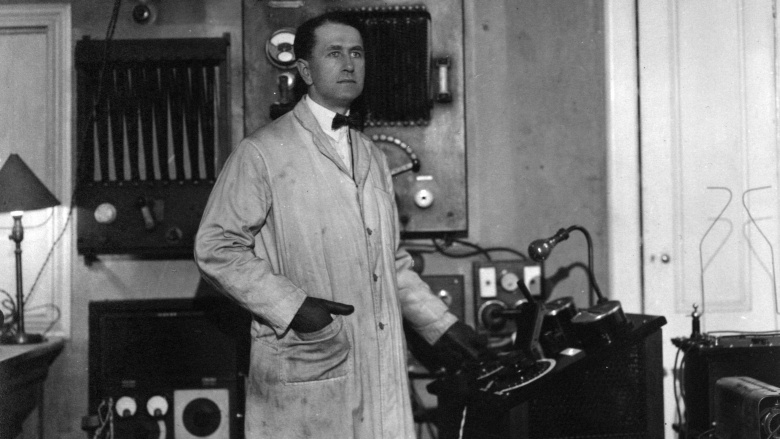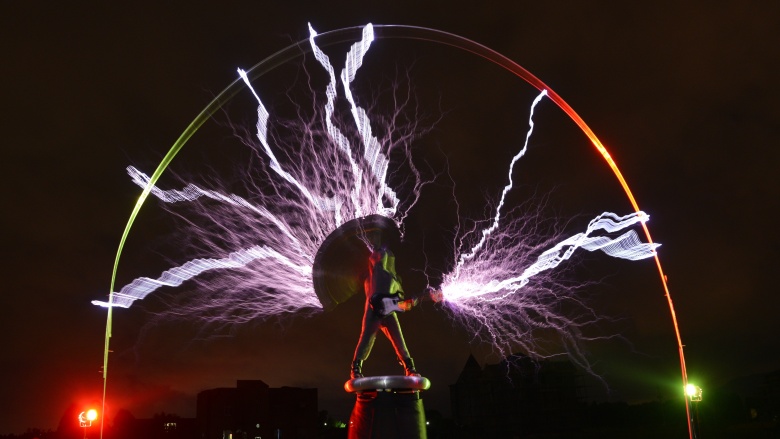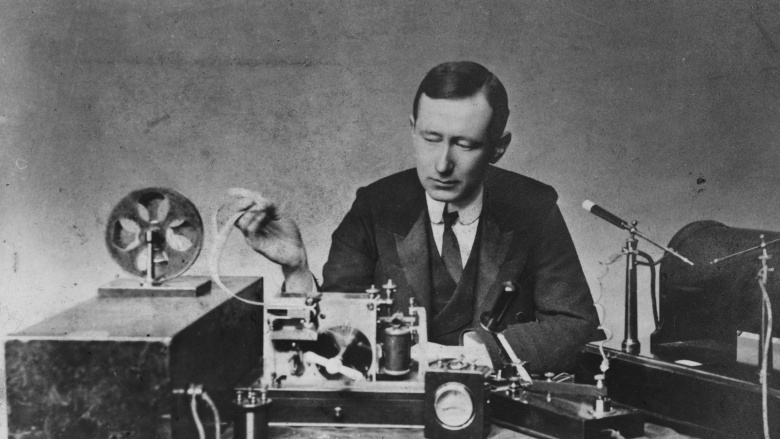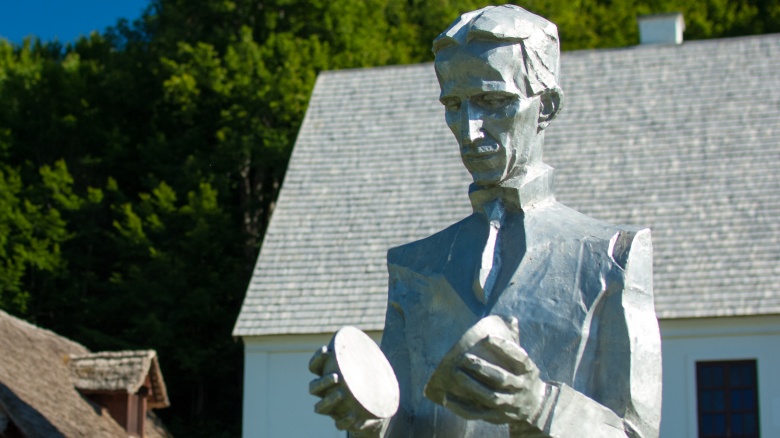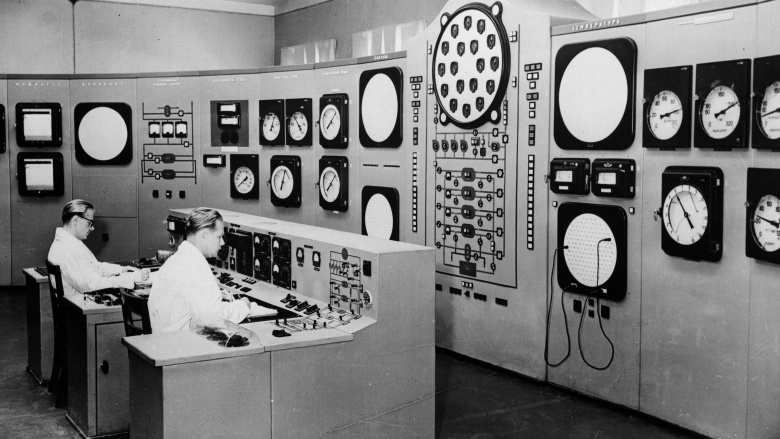Scientists And Their Real-Life Death Rays
For some reason, scientists have been obsessed with the idea of perfecting a death ray for decades. Perhaps it comes from an adolescence spent being subjected to the torture of their peers. Perhaps it comes from being stuck in traffic one-too-many times. Whatever their motivation, making the perfect killing laser has been the dream of choice for more than a few scientists. Here are the sci-guys who've come close to actually creating one. Make sure you don't cut them off while they're driving to the lab...
Harry Grindell Matthews
While the first person to invent the death ray has been the subject of debate, the modern death-ray race began with two people, one of them being Harry Grindell Matthews. Matthews claimed to have invented the first death ray in 1923, according to Time magazine. He even demonstrated his invention to a select few reporters who agreed to publish his astounding accounts. In one account, he was able to ignite gunpowder from a distance. In another, he killed a poor, defenseless mouse. (Note: killing small animals is a common trait of serial killers.) However, he never gave demonstrations to potential buyers, like Britain's Air Ministry. Eventually, Matthews sold the gadget, or so he claims, because he never disclosed to who or how much the purchase was for. Shortly thereafter, he began working for Warner Bros., so clearly he didn't get rich from it.
Edwin R. Scott
Edwin R. Scott was the other scientist who claimed to have made the first death ray, asserting he did so one year before Harry Grindell Matthews. (He also, unsurprisingly, called B.S. on Matthews' claims.) According to Scott, his blaster could kill humans and take down planes from a distance, which is good, because taking down planes from up close can be tricky. He also felt the term "death ray" was a misnomer, preferring the more eloquent term: "human-made lightning stroke," according to Presidents, Diplomats, and Other Mortals. And unlike Matthews, Scott supposedly wanted to demonstrate his weapon for the military, against one of their battleships, but they wouldn't let him, so reports The Awl. Typical military brass, worrying about deranged scientists shooting their expensive ships with human-made lightning strokes.
Guglielmo Marconi, 1st Marquis of Marconi
While Guglielmo Marconi invented what is credited as a death ray, his death-dealing device never produced any actual rays. His weapon, alternately (and confusingly) known as a "peace ray," a "radio ray," and a "war ray," used radio waves, which isn't surprising considering he's considered to be the "father of radio." According to Death Rays and the Popular Media, 1876-1939, Marconi began working on it in 1935 and even completed a prototype he demonstrated for Italian Fascist Dictator Benito Mussolini. This gun was able to take out human targets and short circuit planes' ignitions, causing them to drop from the sky. American scientists treated Marconi's claims with skepticism. However, they supposedly thought they could still possess some feasibility, taking his past accomplishments into account. Some reports say that, while on his deathbed, Marconi confessed to never having perfected his death ray. But that was probably just his way of being modest.
Nikola Tesla
Serbian-American inventor and historic underdog Nikola Tesla threw his hat into the death-ray ring in the 1930s. Sources say Tesla conceived his idea after studying the Van de Graaff generator. However, he probably came up with his idea for a science gun built to disintegrate things not long after his bitter split with Thomas Edison, (coincidence?) as Tesla did later claim having worked on this contraption since the early 1900s. He even filed a patent for it, supposedly, in 1916. Calling it a "teleforce" device, Tesla claimed his energy cannon would "bring down a fleet of 10,000 enemy airplanes at a distance of 200 miles...and...cause armies to drop dead in their tracks." Of course, only a few people ever got to see Tesla's supposed death ray, or as he preferred, a "peace ray," that he constantly swore would be ready any day now. As most can possibly realize, Tesla's death ray never materialized by the time of his death in 1943.
Antonio Longoria
Spanish-born scientist, engineer, and doctor Antonio Longoria also claimed to have built a death ray of his very own in the 1930s. With his grim gadget, Longoria claimed to have killed flying pigeons from four miles away, according to a 1940 Popular Mechanics article. Whereas most inventors deliberately tried to create a death ray, Longoria stumbled onto his while experimenting with a new cancer treatment. Rather than affecting cancer in any way, his device transformed "blood into a useless substance." Instead of allowing his device fall into the wrong hands, Longoria did the noble thing and destroyed his death ray, after making sure he demonstrated it by killing some small animals in front of a group of reporters first. What a class act.
Erich Graichen
In 1928, German physicist Erich Graichen stumbled onto his death ray while working for Siemens. Graichen's original intent was to build a laser for treating blindness and cancer, which Graichen claimed it did. However, prolonged exposure to the beam turned out to be deadly for patients, according to Death Rays and the Popular Media, 1876-1939. As a result, Graichen began referring to his invention as a "veritable death ray to be employed in warfare," capable of destroying cities. Not long after news of his gadget's creation, Graichen received invitations from Mexico and Chile, according to The Milwaukee Sentinel, which he seriously considered, rather than let the German government get their hands on it. No word on whether or not Graichen took the South American governments up on their offers, but considering they didn't become world powers back then, he probably didn't.
Grammachikoff
Aside from having the coolest name on this list, little is known about Grammachikoff and his death ray. According to The Fantastic Inventions of Nikola Tesla, a Soviet scientist named Grammachikoff created a device used to take down airplanes in 1924. A successful demonstration led to Russia's Military Council and Politburo providing funding to have Grammachikoff's invention installed at sensitive locations throughout Russia. This death ray was reported on once by the New York Times, according to Death Rays and the Popular Media, but not much more info exists on it, at the time of this writing, anyway. It's worth mentioning, though, that Grammachikoff didn't develop his death ray alone. He had help from German scientists, so after making instruments of death, Grammachikoff's greatest talent was hogging credit for it.
The United States Navy
This is the one death ray that's undeniably real...because it's aboard the USS Ponce. The US Navy's Laser Weapon System, or LaWS, was installed and tested on the Ponce's amphibious transport dock in 2014, with successful results, according to ABC News. So far this very-real defense system has taken down one drone and sunk a boat. As of this writing, it hasn't harmed a single human, as the weapon has yet to be cleared for use against human targets. Also as of this writing, it's already obsolete. In 2015, USNI reported that the Navy is already working on upgrading their toy with a newer, shinier version. And in a few decades from now, the military will probably have an actual Death Star. May the Force be with us all.

